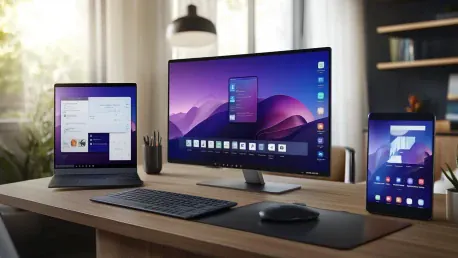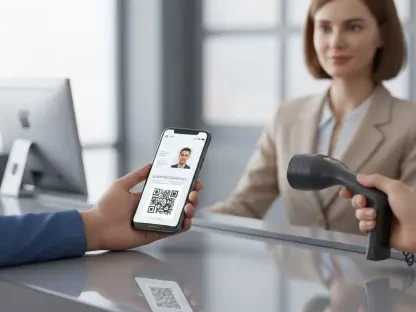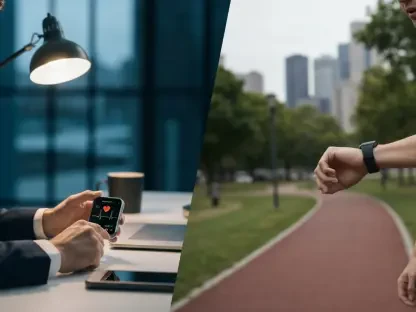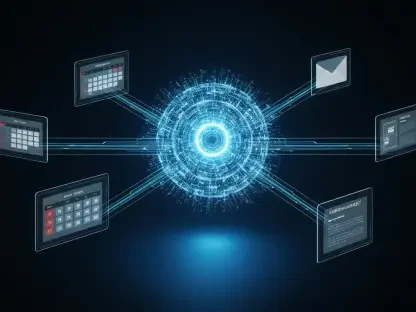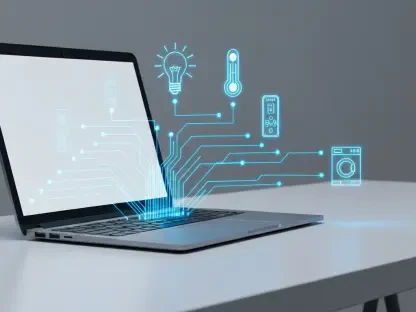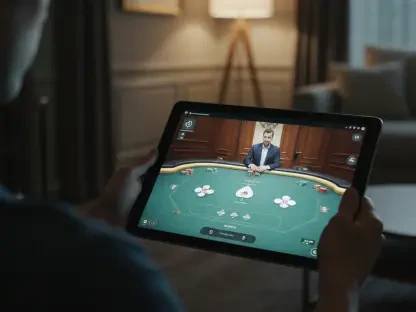Samsung has consistently pushed boundaries in the tech world, and with the introduction of Samsung DeX, it promises a revolution that could blur the lines between mobile and desktop computing. Introduced in 2017, Samsung DeX is a feature designed to transform a smartphone into a productive desktop-like experience when connected to a monitor or TV. Despite its potential and several updates over the years, including wireless connectivity and enhanced multitasking features, DeX remains surprisingly under-promoted and largely unknown to many tech enthusiasts.
Samsung DeX’s premise is straightforward yet fascinating; imagine performing your everyday tasks on your phone and then seamlessly transitioning to a full desktop environment, all from the same device. To explore this potential, tech journalist Kerry Wan decided to undertake an experiment using the Galaxy S25 Ultra powered by DeX as his only computer, diving into the practicality of relying solely on DeX for daily work tasks. This hands-on approach is critical, especially in evaluating if the promise of a seamless mobile-to-desktop interface is genuinely a game-changer for the average user.
The Promise of Samsung DeX
Theoretically, Samsung DeX represents a significant leap in smartphone capability, offering users a fluid transition from mobile to desktop mode. When Kerry Wan took on the challenge of using the Galaxy S25 Ultra with DeX as his primary computing device, he set out to test whether this setup could handle the rigors of everyday work tasks. Notably, DeX isn’t available on every Samsung phone; it’s mainly supported by the newer Galaxy S and Note series devices, with foldable and A series typically excluded. Setting up DeX is designed to be user-friendly; users can connect their phones to a monitor or TV via a USB-C to HDMI cable or pair them wirelessly with a compatible device.
One of the significant advantages DeX offers is its straightforward setup. For reduced latency and a more stable connection, the wired setup is recommended. However, users have the option to explore wireless connectivity, multi-port docking stations, or even laptop shells that can facilitate the DeX experience. Once set up, working within DeX involves pairing a Bluetooth keyboard and mouse, much like connecting standard Bluetooth accessories to any device. Alternatively, users can utilize the phone’s display as a trackpad, though the absence of pressable feedback may not appeal to everyone.
Setting Up Samsung DeX
The brilliance of Samsung DeX lies in its interface design, closely mimicking familiar desktop operating systems such as Windows. This includes features like window snapping, double-tap gestures, and taskbar navigation, which significantly reduce the learning curve for new users. The interface allows users to place various apps on the home screen for easy access, providing a customizable desktop experience right from your phone. However, the effectiveness of DeX can be influenced by the apps installed on the phone. For example, while services like Google Chrome and YouTube adapt well to the desktop setting, others, including Slack and Instagram, may retain their mobile interface.
This distinction is more visual than functional, as users generally appreciate the accessibility of their usual apps on a larger screen. Kerry’s daily workflow typically includes writing in a web-based content management system, responding to emails, conducting research, and editing photos and videos. He was able to manage these tasks effectively within the DeX environment, utilizing apps like Chrome for browsing, the Gmail app for communication, and Adobe Premiere Rush and Lightroom for multimedia tasks. While he noted the absence of some plug-ins and extensions familiar in the desktop version, these were manageable sacrifices in the grand scheme of workflow efficiency.
User Experience and Interface
Comparing the transition to working within DeX to that of switching from Windows to MacOS, Kerry found that not all software and services had direct equivalents, but the most widely-used and popular ones were readily available. Working directly from the phone offered several unforeseen benefits, such as synchronized notifications from both personal and professional apps, enhanced accessibility to the phone’s gallery for dragging and dropping photos and videos, and an instant webcam upgrade using the phone’s front-facing camera, particularly useful for vertical video calls.
These unexpected perks emphasized the seamless integration of mobile and desktop experiences that Samsung DeX aims to offer. Even with some limitations, such as the need for Bluetooth peripherals and potential minor latency in wireless setups, Kerry acknowledged that DeX offered a robust and viable computing setup with just a phone and a monitor. The Android-based software might temper some expectations, particularly for tasks requiring advanced plug-ins, but it comfortably accommodated workflows dependent on broadly-used apps and services from tech giants like Google, Microsoft, and Adobe.
Daily Workflow on DeX
Kerry’s experiment underscored an essential point: while the Android-based software under DeX might limit certain advanced functionalities, for many everyday tasks, DeX proved to be more than capable. This realization hints at a future where one could potentially forgo a traditional laptop, relying instead on their powerful Galaxy S25 Ultra and a monitor to fulfill both mobile and desktop needs. The inherent flexibility and convenience of such a unified device cannot be overstated; it simplifies not only the work setup but also the transition between different working environments.
In this regard, adopting Samsung DeX is much like adopting any new technology—it requires a period of adjustment and an openness to embracing new workflows. Despite some minor hurdles, Kerry’s experience with DeX illustrated that the technology is mature enough to handle most daily tasks efficiently, suggesting that DeX could very well be a glimpse into the future of hybrid mobile and desktop computing for a significant segment of users.
Final Thoughts
Samsung is known for pushing tech boundaries, and with Samsung DeX, it aims to revolutionize by merging mobile and desktop computing. Initially launched in 2017, Samsung DeX is a feature that converts a smartphone into a desktop-like experience when connected to a monitor or TV. Despite its potential and various updates, such as wireless connectivity and improved multitasking, DeX is still under-promoted and not widely known, even among tech enthusiasts.
Samsung DeX’s concept is both simple and intriguing: imagine doing your everyday tasks on your phone and then easily transitioning to a full desktop environment on the same device. To delve into this technology’s potential, tech journalist Kerry Wan conducted an experiment using the Galaxy S25 Ultra powered by DeX as his sole computer. He explored the practicality of relying exclusively on DeX for daily work tasks. His firsthand experience is crucial to determining whether the seamless mobile-to-desktop interface can truly be a game-changer for the average user.
